Understanding Self-Regulation in Emotional Growth
Self-regulation is a foundational skill critical to emotional development, well-being, and social functioning. It encompasses managing one's emotions, behaviors, and thoughts to achieve goals and maintain healthy relationships. This article explores the significance of self-regulation skills, particularly in individuals with neurodevelopmental differences such as autism, highlighting challenges, strategies, and supportive interventions that promote emotional health.
Defining Self-Regulation and Its Foundations in Brain Development

What is Self-Regulation?
Self-regulation is the ability to manage one's emotions and actions to achieve personal goals. It goes beyond simple self-control by encompassing various processes that help individuals respond appropriately to different situations and maintain well-being.
What Are the Main Components of Self-Regulation?
Self-regulation involves several key components:
- Self-monitoring: Being aware of one's emotions, thoughts, and behaviors in real-time.
- Self-evaluation: Reflecting on how one's actions and emotions align with desired outcomes or goals.
- Self-reinforcement: Rewarding oneself to encourage positive behavior and emotional management.
These components work together to help individuals navigate social and emotional challenges effectively.
How Does Self-Regulation Differ from Self-Control?
While often used interchangeably, self-regulation is broader than self-control. Self-control typically refers to the immediate ability to inhibit impulses or resist temptations, whereas self-regulation includes ongoing processes such as adapting strategies, monitoring progress, and maintaining motivation over time.
When Does Brain Development Support Self-Regulation?
The foundation for self-regulation begins with brain development between the ages of 3 and 7 years. During this critical period, areas like the prefrontal cortex mature, enabling children to better manage their emotions and behaviors. Challenges in self-regulation can occur when this developmental stage is impacted by neurodevelopmental disorders, such as ADHD or autism.
Understanding these aspects of self-regulation and its neural underpinnings is crucial for supporting individuals in developing effective emotional and behavioral management skills.
The Impact of Neurodevelopmental Disorders on Self-Regulation
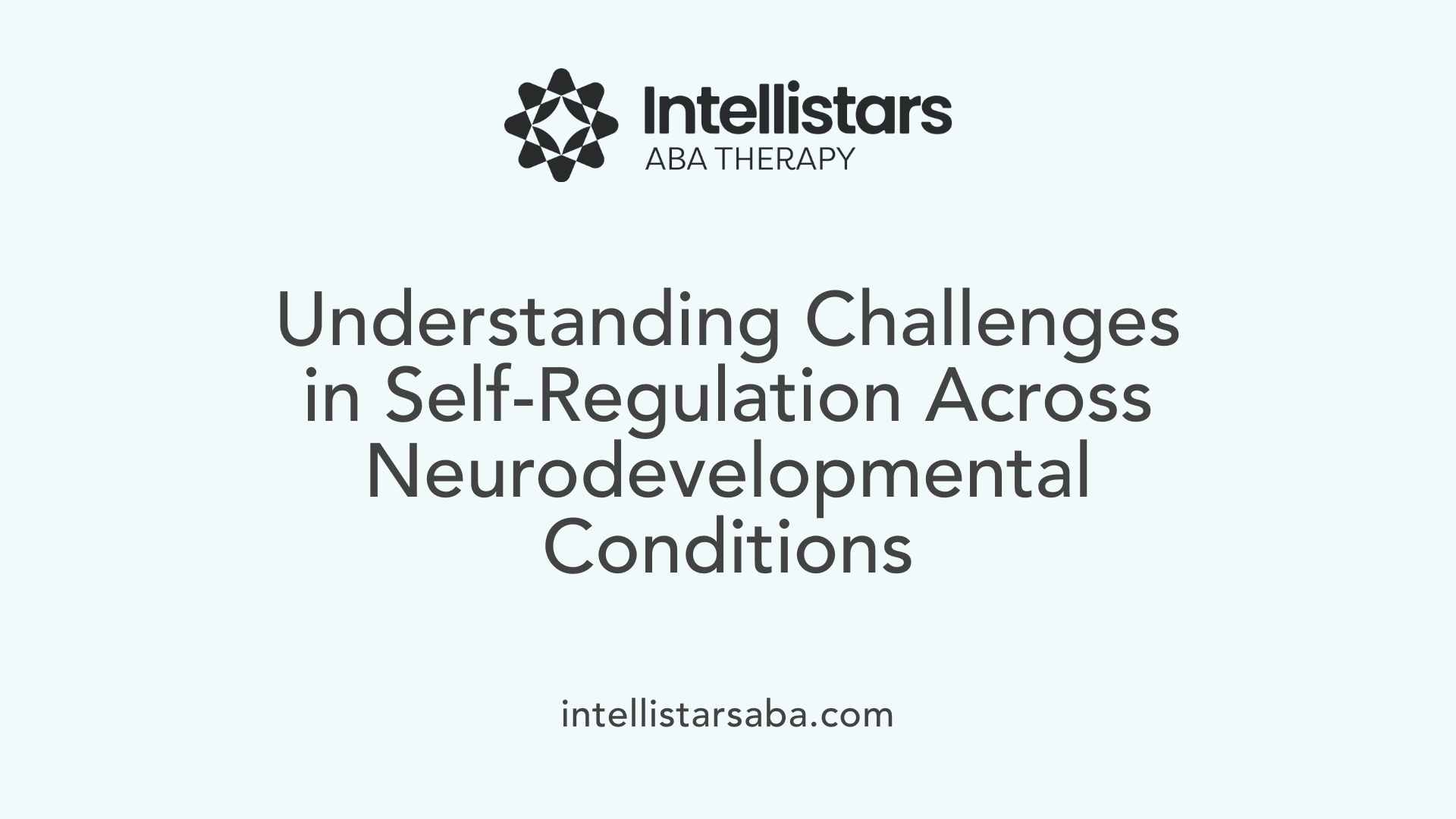
How Do Disorders Like Autism and ADHD Challenge Self-Regulation?
Neurodevelopmental disorders such as autism and ADHD can significantly affect an individual's ability to self-regulate. Self-regulation is the capacity to control emotions, behaviors, and attention to meet goals and adapt to changing demands. In conditions like autism and ADHD, brain development differences and executive functioning challenges often make managing emotions and impulses more difficult. For example, individuals with autism may find sensory sensitivities overwhelming, leading to intense emotional reactions that complicate regulation.
What Is the Link Between Neurological Conditions and Emotional Management?
Difficulties with self-regulation in neurodevelopmental disorders frequently stem from impaired executive functioning—the brain processes responsible for planning, attention, and inhibitory control. This can result in heightened emotional reactivity, impulsivity, and rigidity. In autism specifically, social communication challenges and sensory overload further affect the ability to accurately interpret emotional signals and respond appropriately. These factors together may lead to misunderstandings and frustration both for affected individuals and those around them.
How Do Chronic Stress and Trauma Affect Self-Regulation?
Chronic stress and trauma exacerbate self-regulation difficulties by impacting critical brain areas like the prefrontal cortex, which governs emotional control and decision-making. Sustained stress can impair neural pathways involved in self-monitoring and evaluation, making it harder to maintain calm and focus. In individuals with neurodevelopmental disorders, who already face regulatory challenges, trauma or persistent stress can intensify emotional dysregulation, leading to increased anxiety, impulsivity, and behavioral difficulties.
These insights underscore the importance of tailored support strategies that address the unique self-regulation challenges posed by neurodevelopmental conditions and related stressors.
Emotional Regulation Challenges Unique to Autism
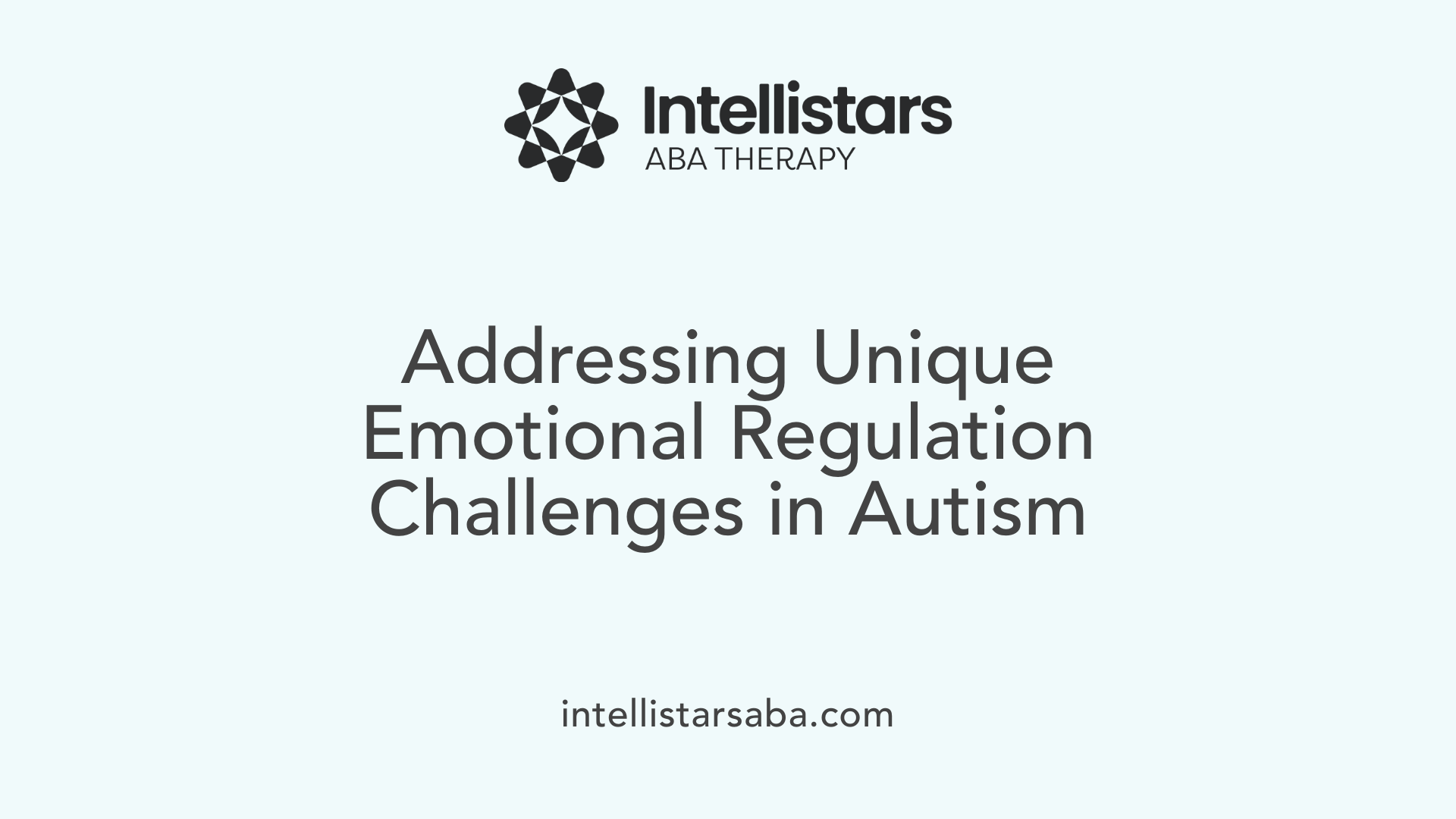
How do sensory sensitivities lead to emotional overload in autism?
Autistic individuals often experience sensory sensitivities to stimuli such as loud noises, bright lights, or crowded environments. These heightened reactions can cause sensory overload, triggering intense emotional responses that may seem overwhelming. This hyperarousal makes it challenging to maintain emotional balance, leading to distress and difficulty in managing emotions effectively.
In what ways do social communication difficulties impact emotional understanding?
Challenges in social communication, such as difficulty interpreting facial expressions, body language, or social cues, can hinder autistic people's ability to recognize and express emotions appropriately. Misunderstandings or inability to verbally express feelings often lead to frustration or anxiety. Furthermore, communication differences contribute to social stress, compounding difficulties in emotional regulation.
What role do executive functioning deficits and rigidity play?
Executive functioning deficits in autism affect planning, flexibility, and impulse control, which are crucial for regulating emotions. Rigidity, including a strong preference for routines and predictable environments, means that unexpected changes can provoke heightened stress and emotional dysregulation. Difficulty adapting to new situations often exacerbates emotional outbursts or shutdowns.
What are common emotional triggers for autistic individuals?
Several triggers uniquely impact autistic people’s emotional regulation. These include disruptions to established routines, social stressors such as crowded or unfamiliar settings, communication challenges, sensory overload, and unexpected demands or transitions. These factors can provoke anxiety, frustration, or emotional overwhelm, requiring tailored strategies to manage responses effectively.
The Double Empathy Problem and Communication Differences in Autism
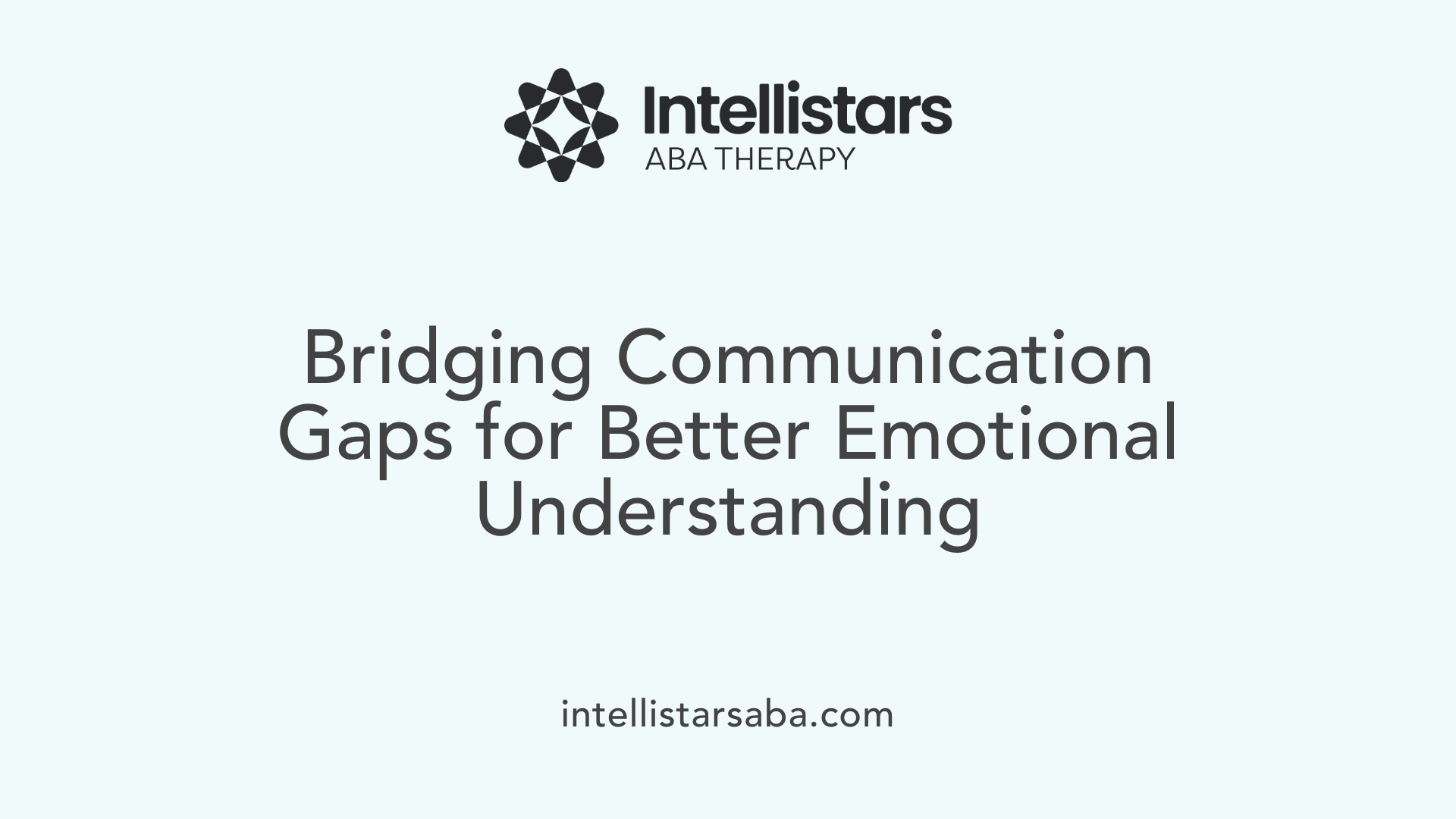
How do mutual communication difficulties between autistic and non-autistic people affect emotional expression?
Communication challenges between autistic and non-autistic individuals are not one-sided but mutual, a phenomenon described as the "double empathy problem." This problem illustrates that misunderstandings arise because each group has different communication styles and ways of expressing emotions. Autistic people may have unique ways of showing feelings, such as using direct or formal language, which non-autistic individuals might misinterpret. Meanwhile, autistic individuals may find it difficult to read non-autistic body language or understand idioms. These mismatches can cause frustration or anxiety for both sides, hindering clear emotional expression and connection.
Why should autistic communication styles be understood as differences rather than deficits?
Rather than viewing autistic communication styles as flaws or deficits, it is essential to recognize them as differences. Autistic individuals often possess distinct patterns of interaction that reflect their way of experiencing the world, like straightforward speech or prioritizing alone time. Research shows that autistic social skills differ but are not inferior to neurotypical styles. Appreciating these diverse communication modes allows for respect and validation, avoiding stigma or judgment that can negatively impact self-esteem and mental health.
Why is bridging communication gaps important for emotional well-being?
Bridging the communication gap between autistic and non-autistic people is vital to emotional health and relationship building. When both parties make efforts to understand each other's styles, it reduces isolation feelings and mental health risks like anxiety or loneliness. Strategies such as using social allies, preparing for social encounters, and valuing all communication forms foster inclusion. Encouraging mutual empathy helps create supportive environments where emotional needs are better met and misunderstandings minimized, contributing positively to well-being and social participation.
Strategies and Interventions to Support Self-Regulation and Emotional Development
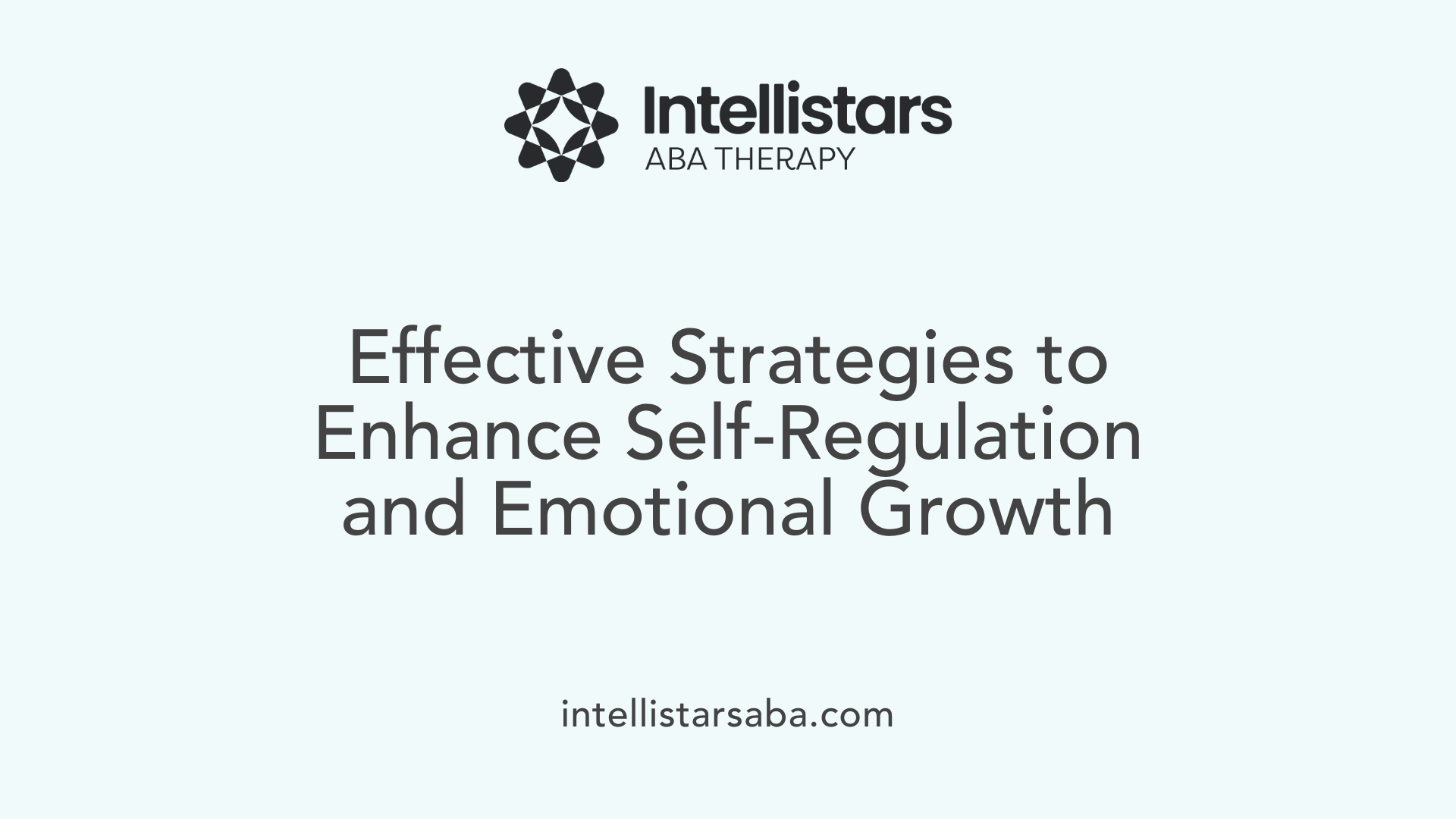
Mindfulness and Self-Awareness Techniques
Mindfulness encourages autistic individuals to focus on the present moment and build an awareness of their emotions and surroundings. Programs, especially for children, such as yoga, foster self-awareness, helping them recognize and understand their feelings. This awareness is foundational for managing emotions effectively.
Deep Breathing and Progressive Muscle Relaxation
These relaxation techniques aid in reducing stress and emotional reactivity. Deep breathing can calm the nervous system, while progressive muscle relaxation helps release tension in the body, supporting better emotional regulation during overwhelming situations.
Use of Visual Schedules and Social Stories
Visual schedules provide predictable daily routines that reduce anxiety and support consistency. Social stories are tailored narratives that teach children appropriate responses in various social scenarios, thereby enhancing emotional understanding and behavior regulation.
Sensory Integration Therapy and Sensory Play
Occupational therapy often includes sensory integration therapy to address sensory sensitivities common in autism. Sensory play activities engage different senses in a controlled manner to help regulate sensory input and prevent emotional overload.
Importance of Individualized and Adaptive Interventions
Because autism presents uniquely in each individual, interventions must be personalized. Strategies should focus on reducing barriers, involving the autistic person in decision-making, and regularly reviewing their effectiveness to adapt support as needed.
| Strategy | Description | Benefit |
|---|---|---|
| Mindfulness & Self-Awareness | Techniques like yoga to enhance emotional insight | Improved emotional recognition |
| Deep Breathing & Muscle Relaxation | Breathing exercises and muscle tension release | Stress reduction and calmness |
| Visual Schedules & Social Stories | Structured routines and scripted social guidance | Reduced anxiety and better social responses |
| Sensory Integration & Play | Controlled sensory activities to regulate input | Minimized sensory overload |
| Individualized Interventions | Tailored support focusing on personal needs | Increased intervention effectiveness |
Role of Speech, Language, and Social Interaction Support
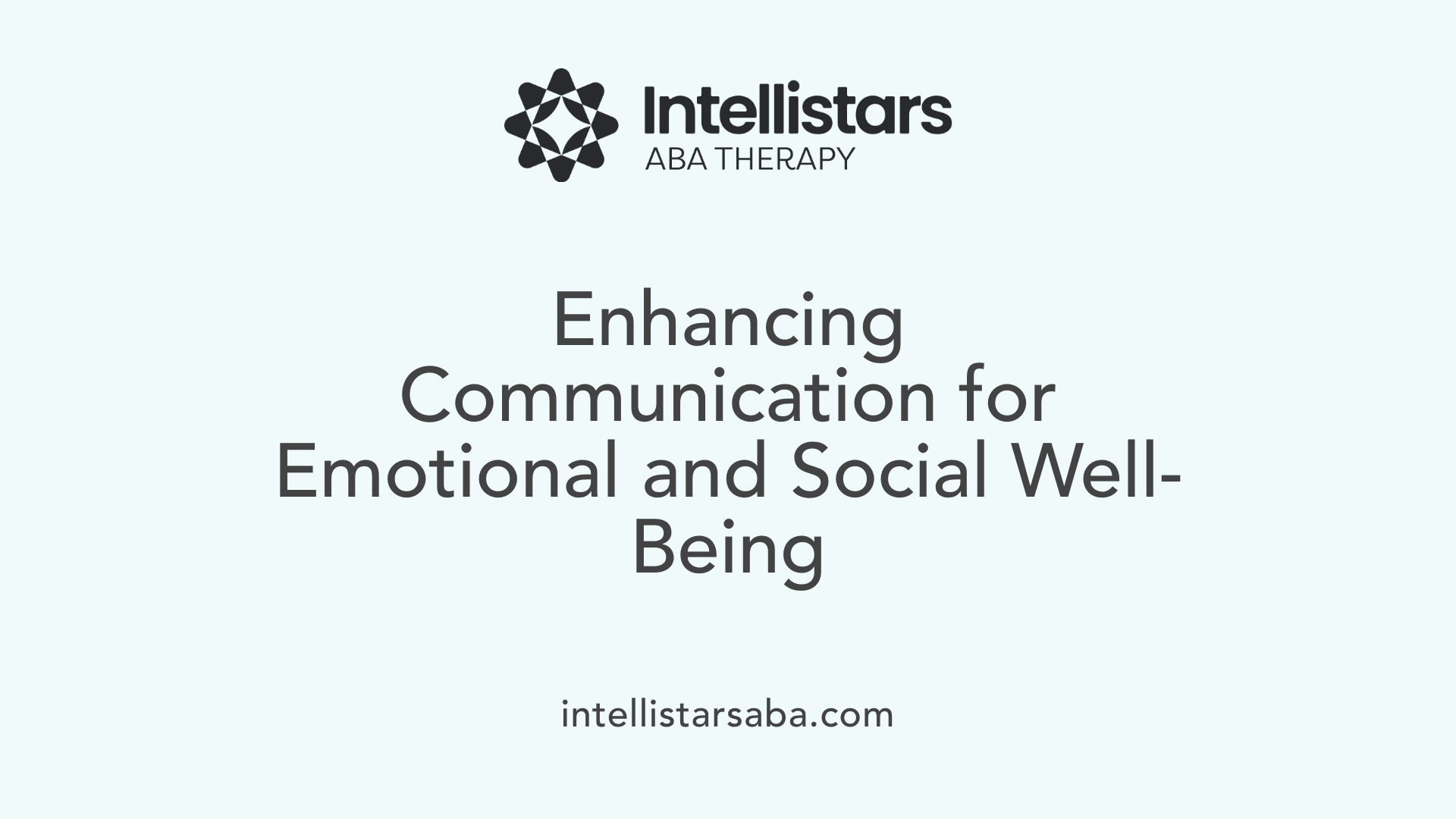
How does speech development vary in autism?
Speech development in autistic individuals can vary significantly. Some may experience delayed speech development, while others might not develop spoken language at all. Additionally, intermittent speech loss can occur, often linked to stress or overwhelmed states known as autistic burnout. This variability means that communication support must be personalized to each individual's needs.
What alternative communication methods help autistic people?
Augmentative and Alternative Communication (AAC) methods provide valuable support for those who find verbal communication challenging. AAC includes tools and techniques like picture exchange systems, communication boards, and speech-generating devices, enabling autistic individuals to express themselves effectively and participate fully in social interactions.
What social learning programs are effective?
Programs such as Intensive Interaction focus on building social interaction skills through play and natural communication strategies. Such initiatives encourage learning social cues, turn-taking, and emotional understanding in a supportive environment tailored to the individual's pace and style.
How can social allies and preparation aid communication?
Enlisting social allies—friends, educators, or coworkers familiar with autism—can provide essential support during social situations. Preparation techniques, including role-playing or discussing upcoming events, help autistic individuals anticipate and navigate social interactions more comfortably. Recognizing diverse communication styles and validating all forms of expression further enhances inclusion.
Overall, supporting communication in autism involves a broad spectrum of tailored approaches ranging from speech therapy and AAC to social learning and ally support, all aimed at empowering individuals to express themselves and connect with others meaningfully.
The Significance of Emotional Literacy and Positive Reinforcement

Teaching Recognition and Naming of Emotions
Teaching emotional literacy involves helping individuals recognize and name their emotions accurately. This skill is crucial because it forms the foundation for effective self-regulation by allowing people to understand what they are feeling and why. For autistic individuals, who may face challenges in interpreting emotional cues, explicit lessons in emotional literacy can bridge gaps in emotional awareness and support clearer communication of feelings.
Using Positive Reinforcement to Encourage Self-Regulation Skills
Positive reinforcement is a powerful tool to encourage the development of self-regulation skills. By rewarding successful emotional management and appropriate responses, individuals are motivated to repeat these behaviors. This approach promotes confidence and a sense of accomplishment, making it easier to build lasting self-regulation habits that contribute to overall well-being.
Impact on Mental Health and Self-Esteem
Developing emotional literacy and employing positive reinforcement positively influence mental health and self-esteem. When individuals can understand and manage their emotions better, it decreases feelings of frustration and confusion. As a result, this reduces anxiety and helps build resilience, contributing to improved emotional stability and a stronger sense of self-worth.
Reducing Anxiety Through Improved Emotional Understanding
Improved emotional understanding helps reduce anxiety by clarifying ambiguous emotional experiences and providing strategies for regulation. When people learn to identify emotions and respond constructively, they experience less overwhelm in stressful situations. This clarity helps ease anxiety, promotes better coping, and supports healthier social interactions, which are essential for mental health.
| Topic | Description | Benefit |
|---|---|---|
| Emotional Recognition | Teaching how to identify and label emotions | Enhances self-awareness and communication |
| Positive Reinforcement | Rewarding successful emotional control | Encourages repetition of positive behaviors |
| Mental Health and Self-Esteem | Strengthening emotional literacy improves emotional stability and confidence | Reduces anxiety, builds resilience |
| Anxiety Reduction | Using emotional understanding to manage stress and overwhelm | Promotes coping and healthier social experiences |
Creating Supportive Environments to Foster Emotional Well-Being

How Can Calming Classroom or Home Environments Support Emotional Well-Being?
Creating a calming environment at school or home is vital for children, especially those with autism or other neurodevelopmental challenges. These settings help reduce stress and sensory overload, making children feel safe and secure. A calm space often includes dimmed lighting, minimal noise, and organized areas that avoid clutter, all of which promote relaxation and focus.
Why Is Reducing Sensory Overload Important?
Sensory sensitivities—such as difficulties with loud noises, bright lights, or strong smells—can trigger intense emotional reactions. Reducing sensory overload means limiting exposure to overwhelming stimuli. This can be done by providing quiet corners, noise-cancelling headphones, or calming visuals. These adjustments prevent distress and help children manage their emotions more effectively.
How Do Balanced Routines and Predictability Help?
Children thrive on predictable routines because they reduce anxiety and create a sense of control. Consistent schedules with clear visual aids like visual schedules or social stories prepare children for daily activities and transitions. Predictability supports self-regulation by making day-to-day experiences more manageable and less stressful.
What Is the Importance of Safe Spaces for Emotional Regulation?
Safe spaces allow children to retreat when overwhelmed, offering a supportive spot to calm down and regain control of their emotions. These environments respect their needs for quiet time and sensory breaks. Incorporating tools such as comfortable seating, calming sensory toys, or mindfulness prompts in these spaces helps children practice emotional regulation techniques.
Together, these environment strategies help foster emotional well-being, promote self-regulation skills, and reduce feelings of anxiety or distress, contributing positively to the overall mental health of children.
Occupational Therapy Contributions to Emotional and Self-Regulation Skills

How Does Sensory Integration Therapy Support Emotional Regulation?
Sensory integration therapy is a key occupational therapy approach that helps autistic individuals manage sensory-related emotional triggers. By providing controlled sensory experiences, therapists can help reduce hyperarousal caused by stimuli such as loud noises or bright lights. This gradual exposure trains the brain to better process sensory input, decreasing emotional overload and improving overall emotional balance.
In What Ways Does Occupational Therapy Enhance Social Skills?
Occupational therapy supports social skills development by guiding autistic individuals through structured social scenarios, role-playing, and social skills groups. This targeted practice improves understanding of social cues and effective communication, which helps reduce frustration and emotional distress linked to social misunderstandings.
How Are Executive Function Abilities Improved Through Occupational Therapy?
Executive functioning, including planning, flexibility, and impulse control, is critical for emotional regulation. Occupational therapists employ strategies such as visual schedules and task breakdowns to enhance these skills. Strengthening executive function mitigates rigidity and impulsivity, common challenges that affect self-regulation in autism.
What Self-Regulation Strategies Are Taught in Occupational Therapy?
Occupational therapy teaches self-regulation techniques like deep breathing, progressive muscle relaxation, and mindfulness exercises tailored to individual needs. Therapists may also introduce sensory regulation tools and coping skills training. These approaches empower individuals to recognize emotional states and apply calming strategies effectively.
| Approach | Purpose | Benefits |
|---|---|---|
| Sensory Integration Therapy | Manage sensory sensitivities | Reduces emotional overload and triggers |
| Social Skills Development | Enhance interaction and communication skills | Decreases social anxiety and frustration |
| Executive Function Improvement | Improve planning and impulse control | Supports flexible thinking and emotional control |
| Self-Regulation Strategy Teaching | Teach relaxation and coping techniques | Promotes emotional self-management and resilience |
The Holistic Benefits of Enhanced Self-Regulation Skills
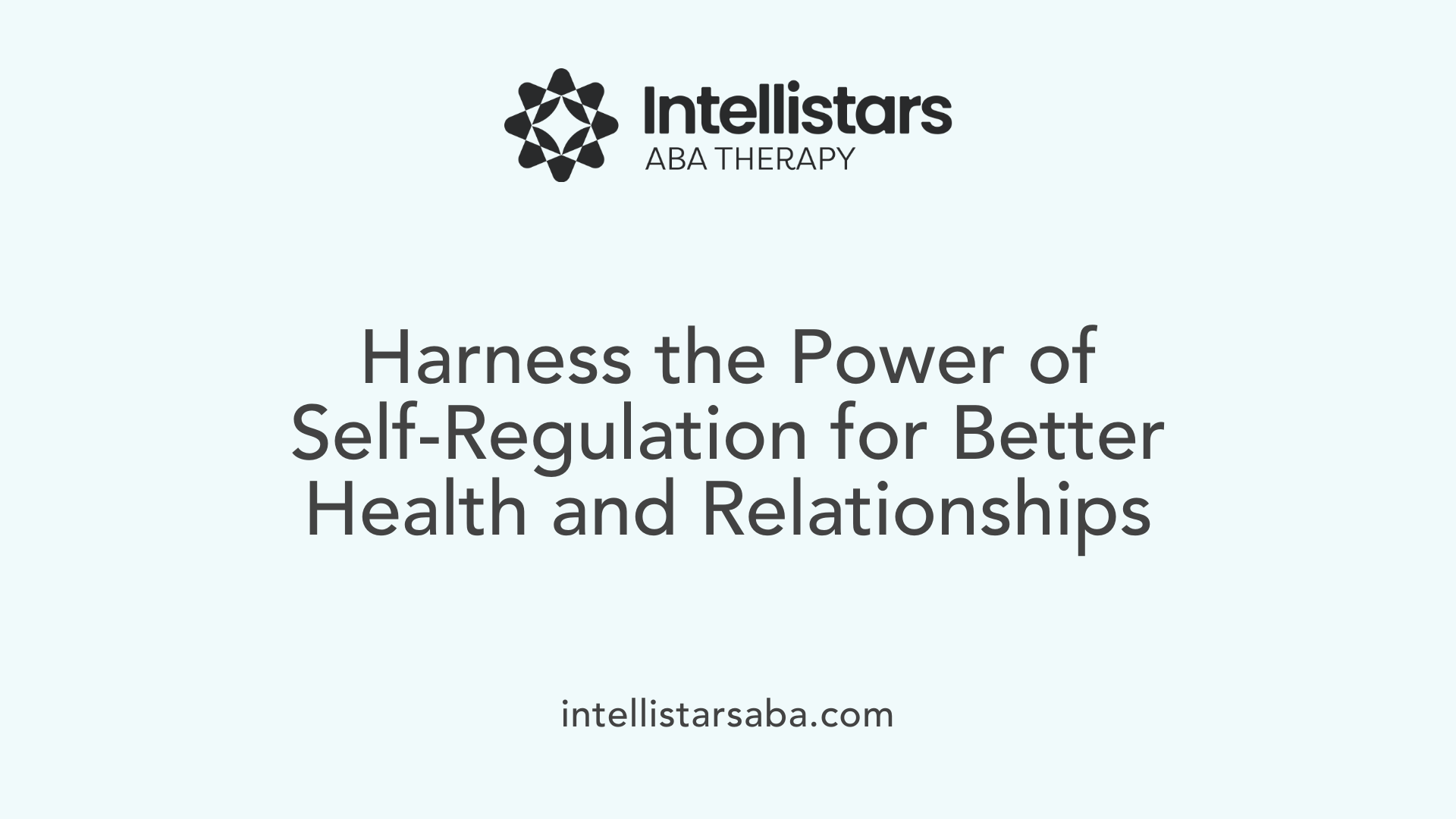
How Does Self-Regulation Impact Physical, Emotional, Mental, and Social Health?
Effective self-regulation plays a crucial role in maintaining overall well-being. Physically, it allows individuals to manage stress responses, which helps in reducing the risk of stress-related illnesses and supports better sleep and energy balance. Emotionally and mentally, self-regulation aids in controlling impulses and managing triggers, which can reduce anxiety, depression, and emotional dysregulation.
Social health benefits as self-regulation supports the ability to navigate social interactions smoothly. By managing emotional responses and behaviors, individuals foster healthier interpersonal connections and reduce conflict.
How Does Better Stress and Conflict Management Result from Strong Self-Regulation?
Good self-regulation skills equip people with tools like mindfulness, deep breathing, and self-monitoring to handle stressful situations more calmly and effectively. These techniques help prevent overwhelming emotions that could escalate conflicts. By recognizing stressors early, individuals can apply coping strategies before tensions rise.
What Improvements in Relationship Building and Maintenance Stem from Enhanced Self-Regulation?
Self-regulation improves communication by allowing individuals to be more aware of their emotions and reactions. This awareness supports clearer expression and better interpretation of others’ feelings. As a result, trust and empathy are strengthened, leading to stronger, more stable relationships.
In What Ways Does Self-Regulation Contribute to Overall Mental Well-Being?
Managing emotions and behavior through self-regulation lowers occurrences of mental health challenges such as anxiety and depression. It provides a foundation for resilience, enabling individuals to recover from setbacks and maintain a positive outlook. Effective self-regulation is therefore vital for sustaining long-term mental health.
Empowering Emotional Growth Through Self-Regulation
Mastering self-regulation is essential for emotional development, especially for individuals navigating the unique challenges of autism and other neurodevelopmental disorders. By recognizing communication differences, addressing sensory sensitivities, and employing adaptive strategies such as mindfulness, visual supports, and supportive therapies, individuals can cultivate emotional resilience and achieve healthier, more fulfilling lives. Creating environments that nurture these skills and understanding emotional differences as part of human diversity fosters empathy and connection, paving the way for stronger communities and improved mental well-being.






